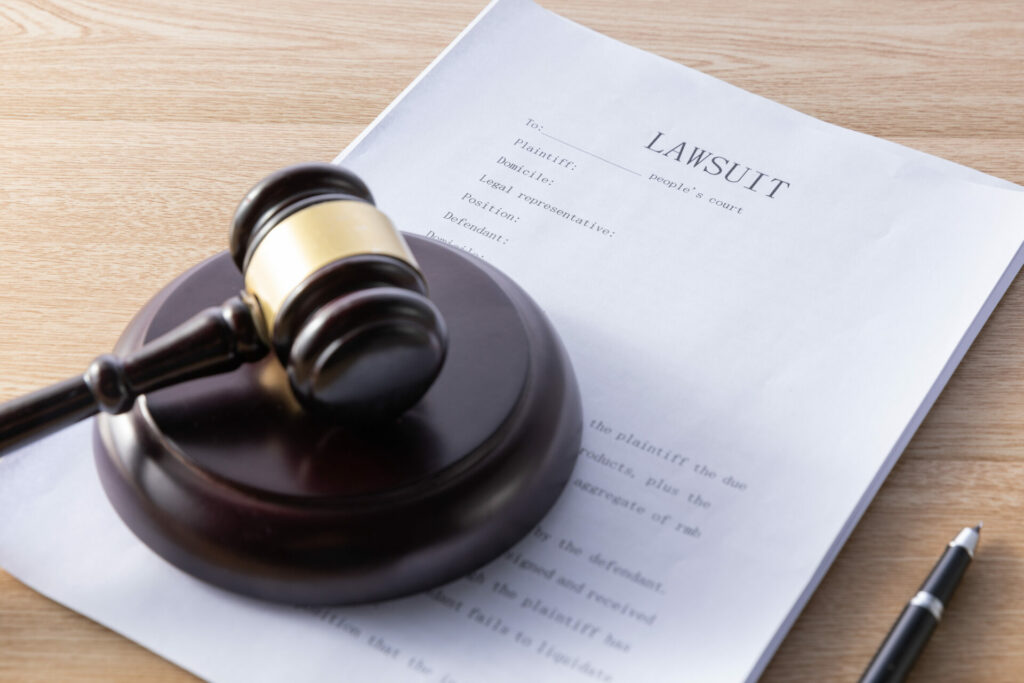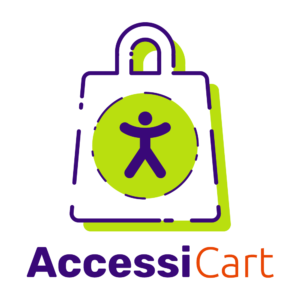It’s true that you can get sued or fined over the accessibility of your website. If you are concerned about your risk, this post offers some practical approaches for getting started with addressing this concern, but also a better way to think about accessibility.

Overview for accessibility lawsuits
In the US, the Americans with disabilities act (ADA) creates civil rights for persons with disabilities to have access to the same things that non-disabled people have access to every day – stores, banks, etc. – and this extends to online accessibility as well. ADA has been an important legal tool for people with disabilities to be able to get improvements that allow them to be more independent and maintain their human dignity.
It’s also true that in the US, we unfortunately have a lot of predatory lawsuits. These are lawsuits where one attorney and one disabled plaintiff may sue hundreds of individual websites. According to a recent report from Accessibility.com, more than 66% of all web accessibility lawsuits in 2022 were filed by five law firms. While courts are beginning to crack down on this a bit, it does create a bit of a wild west situation.
In other parts of the world, accessibility is improved and enforced not through lawsuits but rather through laws that are enforced by governments through fines. Currently, in many places enforcement is not very stringent or strong, but this is changing rapidly. For instance, in June 2025 the European Union will begin much stronger reinforcements around accessibility issues.
It’s important to remember that just like with privacy law, it’s not where your business or your website are based that determines your jurisdiction but rather is where your users are based. If your website has customers/users from the European Union, you will be subject to European Union accessibility law — just like you are already subject to GDPR privacy law.
Demand letters
Often, the first step in being sued for website accessibility under the ADA in the United States is receiving a “demand letter”. This is a letter sent from an attorney to you as the site owner, notifying you that accessibility barriers were found on your website, and the attorney’s client (the “plaintiff”) intends to sue you over this.
In cases where the attorney/plaintiff are suing many websites, there may not be specific information about the barrier the user encountered, but there may a general issue mentioned, for example “missing alt text”.
Common issues mentioned in demand letters are:
- missing text alternatives (“alt text”)
- inadquate color contrast
- issues with keyboard navigation
- captions or transcripts for videos or multimedia
These demand letters are often viewed as an invitation to create a settlement to avoid a lawsuit. While the plaintiff (the disabled person) cannot receive damages under ADA, some states allow private parties to receive compensatory damages under state laws, or a financial compensation for the harm or injury caused to the plaintiff by the inaccessible website.
If you have already received a “demand letter“ notifying you of an intent to sue your website over accessibility in the United States, you should definitely take this seriously, even though the letter may look a lot like junk mail. Contact an attorney (preferably one who has some experience in these issues), and make a plan with your developer or accessibility experts to begin improving your site accessibility.
Start documenting
If you’ve received a demand letter, your attorney may advise you to start documenting your website and any changes to it. Make a backup of the site BEFORE you start to make changes, and regularly after that. You may later want to be able to prove that certain issues were or were not on your site on particular dates.
Make backups that have the datestamp in the filename. Store them off of your website server, sending them to cloud storage like Amazon S3 storage or Dropbox. Keep every single backup until your litigation is resolved (and maybe even after as a precaution!).
If you’re working with your developer to make improvements or fixes to the accessibility issues on your website, document the issue, where it was found, what was changed, and who changed it. Save this documentation until your litigation is resolved. And really, this is documentation that you should be keeping all the time as proof of working on improving your website accessibility.
Skip the temptation to add an overlay plugin/widget
It can be stressful receiving a demand letter, and you might be tempted to reach for an easy button and install an “overlay” widget or plugin on your website to improve accessibility. The problem is that these overlay plugins only fix about 30% of the issues on your site, and can often cause issues for users with disabilities. In fact, overlay widgets are increasingly cited as accessibility issues in lawsuits! Read more about our take on accessibility overlay plugins here.
Summons to court
If your settlement negotiations break down or (more commonly) you ignored or didn’t see the demand letter, then you may receive a summons to court. This means that the lawsuit is taken to the next level and you (or someone on your behalf) will need to respond or appear in court.
You absolutely should have an attorney working with you if you receive a summons. Your attorney will be able to help you figure out if there are still options for settlement and what to do next in your particular case.
Shift your mindset from risks to benefits
A lot of site owners first began exploring accessibility because they are concerned about the possibility of a lawsuit or a fine. But website accessibility offers a lot of additional benefits when it’s viewed as improving user experience.
- It broadens your potential audience by 20 to 25%. Most other user experience improvements can only hope for a 2% to 5% improvement.
- When you make your site accessible, the user experience for ALL users improves. For instance, users interacting with your website on a phone in bright sunlight will have a better experience.
- Improving accessibility almost always improves your SEO.
- Improving your site accessibility and including that with a statement on your website is a great investment in your brand.
Shifting your mindset from a focus on risks to focus on benefits is a shift out of a defensive and fearful position to a more entrepreneurial and business forward approach. If you stay in business, you will almost certainly have to address web accessibility sooner or later, and shifting to a focus on benefits will help you do this in a more cost-effective way that will benefit all of your users.
Need help on your
accessibility journey?

AccessiCart offers accessibility maintenance plans for your website. Remove barriers for people with disabilities, widen your audience and meet legal requirements with confidence!